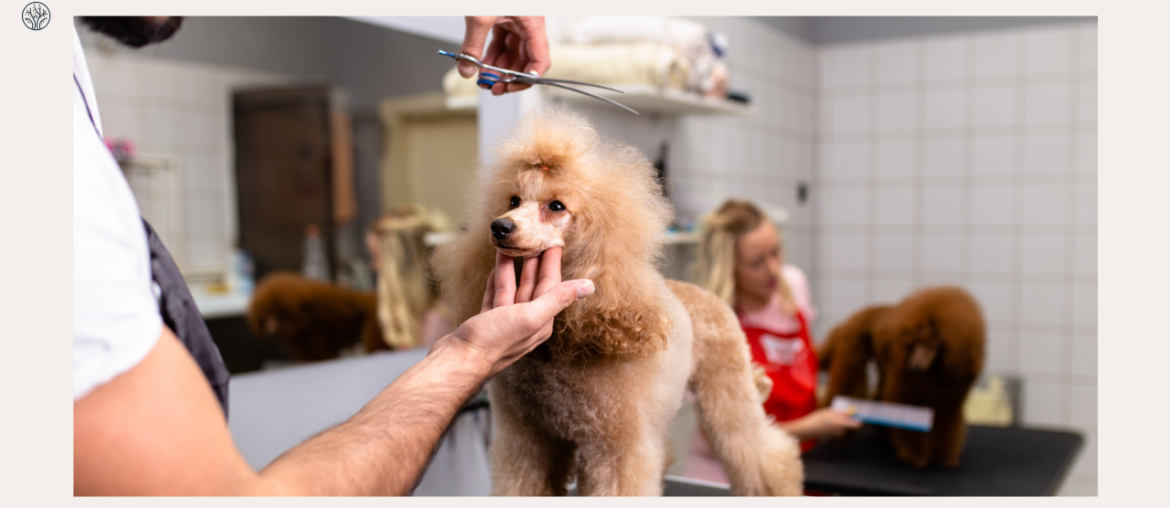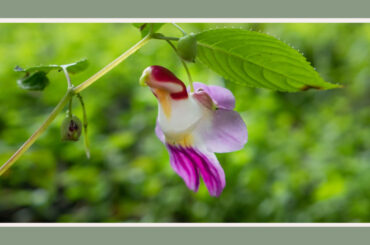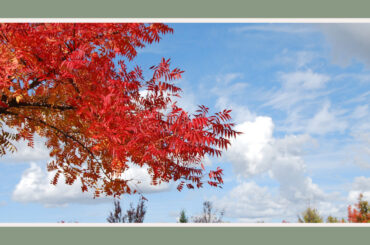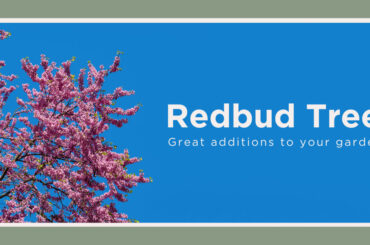Grooming your dog is more than just about appearances; it’s essential for their health and well-being. A well-groomed dog not only looks great but also feels great. In this guide, we’ll share dog grooming tips and tricks from experts to help you keep your furry friend happy, healthy, and comfortable.
What is dog grooming?
As we introduce in our last blog, “Best Mobile Pet Grooming”, it is the process of caring for your dog’s look and well-being by cleaning, brushing, trimming the hair, bathing, and styling their fur, nails, ears, teeth, and other body parts.
How Often Should You Groom Your Dog?
The frequency of dog grooming depends on several factors, such as your dog’s breed, coat type, lifestyle, age, and health. As a general rule of thumb, you should groom your furry friend at least once a month.
However, some dogs may need more or less grooming for their specific needs.
For example, short-haired dogs have smooth, easy-to-maintain coats requiring minimal grooming. Brush them weekly and bathe them once every two months to remove loose hair and dirt.
Meanwhile, medium-haired dogs have longer and thicker coats that tend to shed more and get matted easily. Consider brushing them at least twice a week to prevent tangles and mats, and bathe them monthly.
Finally, long-haired dogs have fine, silky coats that need more attention and care. Remember to brush them daily to keep their fur smooth and shiny. Bathe them every two weeks or as needed.
Dog Grooming Tips And Tricks For Beginners
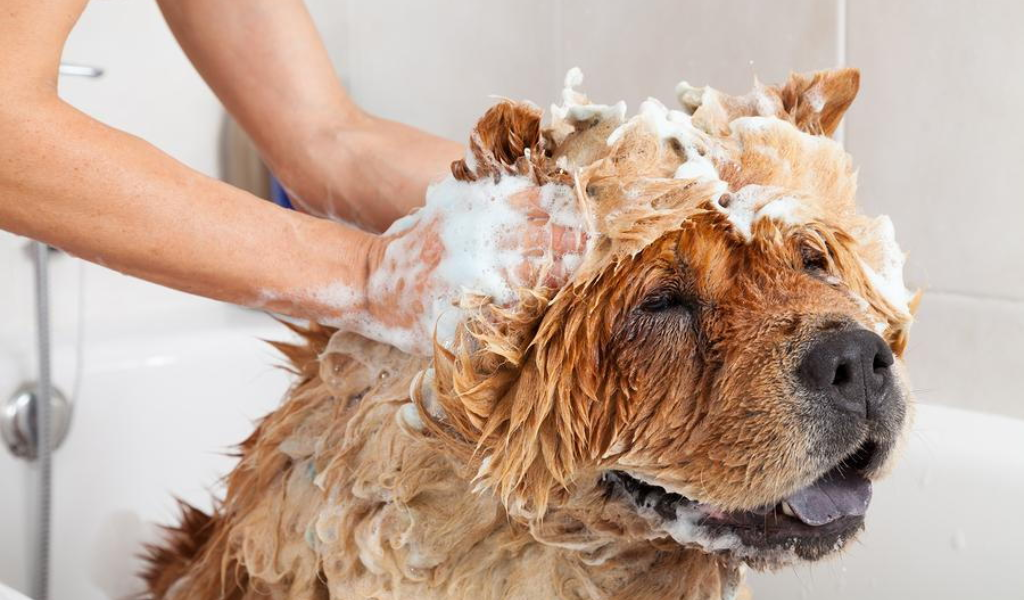
Now that you are at the first step to grooming your dog at home. Let’s take note of these grooming tips to make this process easier and more enjoyable for both of you.
1. Know your dog’s coat type to choose shampoo
Before grooming your dog, you should know what type of coat they have and what kind of care they need. Each coat type has different characteristics, such as length, thickness, texture, curliness, shedding tendency, etc. Knowing your dog’s coat type will help you choose the right shampoo.
The first tip for dog grooming is to know your dog’s coat type and choose the right shampoo. Each coat type requires different care and products to keep them healthy and shiny. Here are some common coat types and the best shampoos for them:
- Wiry coats: These are rough, coarse, and stiff coats often found in Terriers and Schnauzers. They need a shampoo that can remove dirt and odors without stripping away the natural oils that protect the skin. Bio-Groom Groom’n Fresh Dog Shampoo is a good option, with a pleasant fragrance and a mild formula.
- Long-haired coats: They include Yorkshire terriers, Maltese, and Afghan hounds with silky, smooth, and flowing coats. They need a shampoo that can detangle, moisturize, and add shine to the skin. Consider IV San Bernard Passion Fruit Shampoo with a fruity scent and a rich formula that nourishes and softens the coat.
- Coats that shed: Labrador retrievers, German shepherd dogs, and pugs tend to shed a lot of hair. They need shampoo to reduce shedding, strengthen the hair follicles, and improve the coat texture. The natural ingredients of Burt’s Bees Shed Control Shampoo will moisturize and soothe their coat.
- Odor-ridden coats: These tend to get smelly quickly because of various factors, such as dirt, sweat, bacteria, etc. Their shampoo should be able to eliminate odors, cleanse the skin and coat, and prevent infections. Our recommendation is Nature’s Miracle Odor Control Shampoo for Dogs.
2. Choose the right grooming tools
How to groom your dog at home? The next step is to get suitable grooming tools for your furry friend. They are brushes, combs, clippers, scissors, nail trimmers, ear cleaners, toothbrushes, grooming tables, etc. Follow our guidelines for the best results:
Let’s start with the nail clippers. Good nail clippers should have a handy size and shape to bring a safe nail trimming experience. A fantastic example is BOSHEL Dog Nail Clippers with sharp blades made of stainless steel material. It has a safety guard that can cut through thick nails smoothly and cleanly.
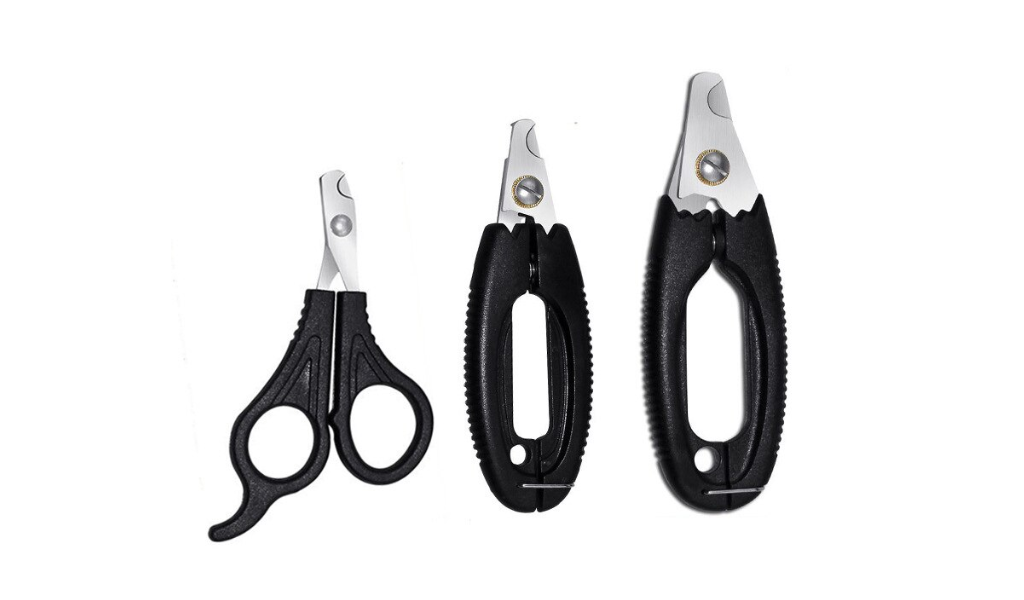
The next tool to consider is brushes – which remove your furry pal’s loose hair, dirt, mats, and tangles. The brush’s size and shape may affect the tool’s coverage and comfort. If your pet has sensitive areas, choose a small or round-shaped brush.
A popular brush to consider is the Hertzko Self Cleaning Slicker Brush. This slicker brush has fine bent wires reaching deep into the coat. It also has a self-cleaning button to retract the bristles and release the hair for easy cleaning.
For an easy start, we suggest you get a pet grooming vacuum kit, which combines a vacuum cleaner and a grooming tool. It allows you to remove loose hair, dirt, and dander from your dog’s hair while reducing shedding and mess.
You can get all these items at Chewy at reasonable prices because they offer countless promos and discounts for new customers. Check them out!
3. Regularly brush your dog’s coat
Brushing your dog’s coat is one of the most vital parts of the grooming routine. This step not only removes tangles from your pet’s coat, but also distributes natural oils, improves blood circulation, and stimulates skin health.
The brushing frequency should be tailored to your companion’s coat type and shedding tendencies.
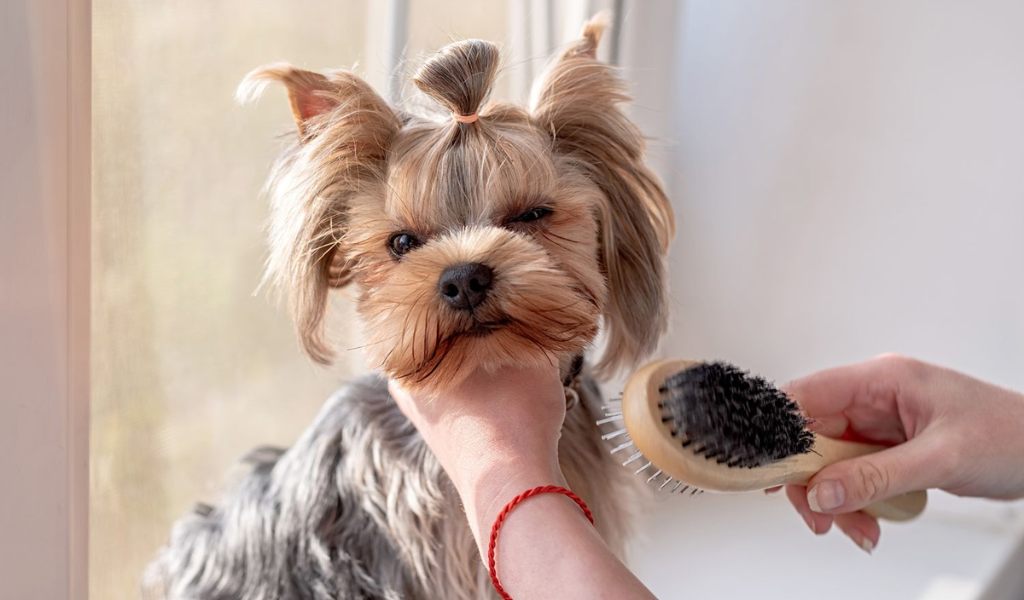
Start from the head and work your way down to the tail, following the direction of hair growth. Use gentle strokes and avoid pulling or tugging on the fur.
If you encounter a mat or a tangle, use a comb or a de-matting tool to loosen it gently, then brush it out. Do not cut or shave off mats or tangles, which can damage the coat and cause skin irritation.
See more: Pet Supplies Plus Grooming Prices (2023 Updated)
4. Check your dog’s skin when grooming
Here are the next dog grooming tips and tricks. As you groom your dog, pay attention to their skin condition. Look for signs of redness, swelling, rash, bumps, scabs, flakes, or parasites. If you notice any of these symptoms, ask your vet for diagnosis and treatment:
| Health Issue | Symptoms | More info |
| Allergies | Itching, scratching, licking, biting, hair loss, inflammation, and infection. | Allergies can result from various substances and cause many skin and health issues in dogs. |
| Fleas | Itching, scratching, biting, hair loss, allergic reactions. | Fleas not only be bothersome but also transmit diseases and parasites to dogs. |
| Ticks | Irritation, inflammation, infection. | Ticks are more than a nuisance; these can pose serious health risks to dogs. |
| Mites | Itching, scratching, hair loss, crusts, scales, infection. | Mites can result in different types of mange, each with its own set of symptoms and challenges. |
| Ringworm | Circular patches of hair loss, redness, scaling, and itching. | Despite its name, ringworm is not a worm – but a fungal infection, and can affect both dogs and humans. |
5. Trim your dog’s nails carefully
Excessively long nails can lead to discomfort, pain, injuries, and paw deformities. Also, long nails can scratch you, your furniture, and your floors. Therefore, trimming your dog’s nails is a crucial aspect of proper grooming.
Depending on how fast your pet grows, you should trim their nails every two to four weeks. Prepare nail clippers, a nail grinder, or a file to do the task.
But be careful not to cut too close to the blood vessel within the nail. It might bleed, hurt your pup, or get infected when you accidentally cut it.
Here’s a step-by-step guide to trim your dog’s nails safely:
1. Find a quiet, well-lit spot.
2. Make sure your companion is calm and relaxed.
3. Hold your dog’s paw gently but securely.
4. Look for that pinkish or grayish part inside the nail (that’s the quick).
5. Trim the nail at a 45-degree angle below the quick.
6. If you accidentally cut the quick and it starts bleeding, put some styptic powder or cornstarch on it to stop the bleeding.
7. Remember to give your dog lots of love and treats afterward for being a good pup!
6. Teach your dog to enjoy grooming sessions
Grooming is crucial for your dog’s health but might make some dogs nervous or uncomfortable. Therefore, teaching your companion to enjoy will make the process easier and less stressful.
Start by gently touching and massaging different parts of your dog’s body. Keep doing this regularly until your dog is okay with being touched.
Then, show your dog the grooming tools, let them sniff, and check out each one.
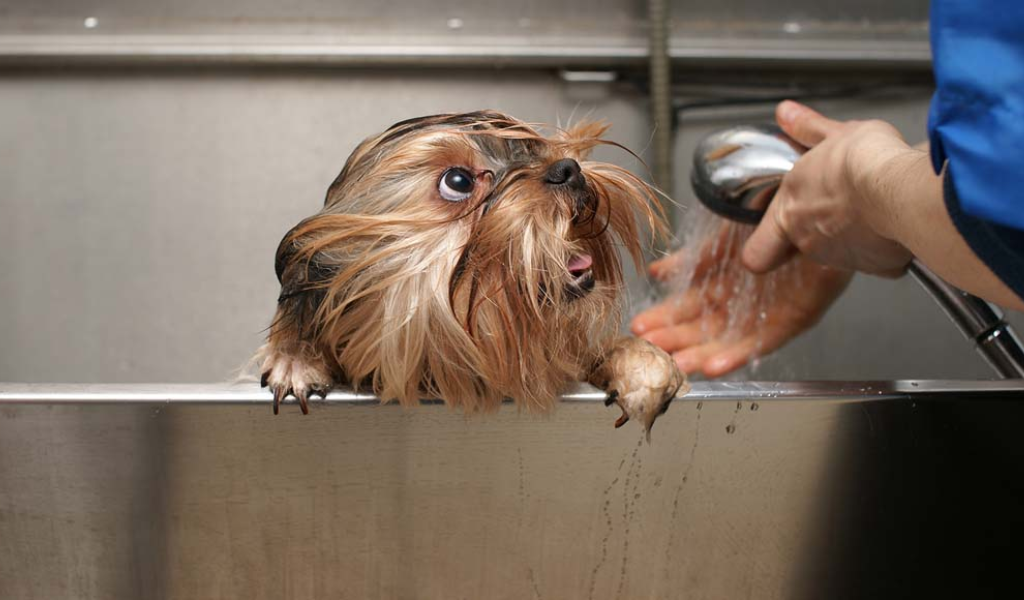
Begin by brushing or combing your dog softly and for a short time. Avoid sensitive spots like their face or paws at first.
Once your dog is comfortable with brushing, move on to other grooming tasks like nail trimming, ear cleaning, or tooth brushing.
Keep grooming sessions fun and positive. Remember to use a happy and encouraging tone and give your pet breaks to play or cuddle. And always end the grooming session with a special treat, praise, or a toy.
In case you find this process too challenging, join some online grooming courses for more detailed instructions.
How To Relieve Dog Itching After Grooming?
Finally, it’s crucial to soothe your dog’s itching after grooming to ensure their comfort and well-being. Here are the steps you can take:
- Rinse Thoroughly: Ensure you rinse your dog thoroughly during and after the grooming to remove any residual shampoo or conditioner. Leftover products can lead to itching and skin irritation.
- Use Hypoallergenic Products: Consider using hypoallergenic grooming products specifically made for sensitive dogs. These items are less likely to cause skin reactions or allergies.
- Oatmeal Bath: Use a dog-specific oatmeal shampoo, or make one at home by mixing finely ground oatmeal with water and applying it to your dog’s coat. Let it sit for a few minutes before rinsing to soothe the itching.
It’s essential to pay attention to your dog’s behavior and skin condition after grooming. If the itching continues or seems severe, seek expert advice from your vet.
Following these dog grooming tips and tricks can keep your companion happy and healthy. Remember to always be gentle and patient during grooming sessions, and reward them with treats and praise. Happy grooming!

